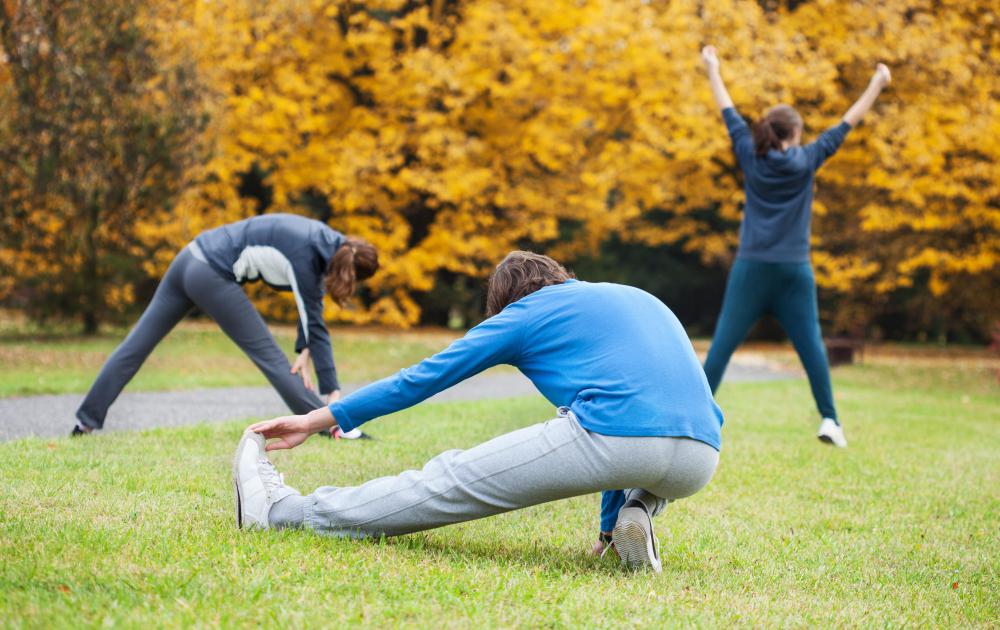At WiseGEEK, we're committed to delivering accurate, trustworthy information. Our expert-authored content is rigorously fact-checked and sourced from credible authorities. Discover how we uphold the highest standards in providing you with reliable knowledge.
What is Active Stretching?
Active stretching is an exercise technique intended to increase flexibility in a muscle by activating a reflex known as reciprocal inhibition. Reciprocal inhibition, in short, is the idea that when a muscle — the agonist — contracts, its opposing muscle, or antagonist, must relax in order to allow for that contraction. Contracting the quadriceps muscles on the front of the thigh, for instance, requires relaxing the hamstrings on the back of the thigh. Therefore, if the goal is to encourage the hamstrings to relax to achieve a deeper stretch, then the technique of tensing the quadriceps while holding a hamstring stretch is employed.
This form of stretching is often recommended as a progression from passive stretching, in which a muscle stretch is held for 20-30 seconds while keeping all muscles involved relaxed. To stretch the hamstrings passively, for instance, one might lie on her back on the floor with her left leg extended and her right leg held straight up toward the ceiling and then pull her right leg down toward her using the force of her arms, keeping the leg relaxed. She would then follow that stretch with active stretching technique, in which she would repeat the same stretch but this time contract her quadriceps to assist in bringing her leg down toward her.

The idea behind active stretching is that as much as one tries to relax a muscle during a passive stretch, the muscle being stretched will necessarily contract in order to protect itself from lengthening to the point of injury. Responsible for this reflex is the muscle spindle, a sensory organ found in muscle fibers that perceives changes in the length of muscle as well as the rate of change in length taking place. When one puts a muscle into a passive stretch, muscle spindles signal the nervous system to react reflexively, placing forces upon the muscle that resist the stretch. In order to circumvent this mechanism, then, it is recommended to employ active stretching technique, which eliminates force on the antagonist muscle — in the above example the hamstring — by activating reciprocal inhibition.

Similar methods to active stretching include proprioceptive neuromuscular facilitation (PNF) stretching and resistance stretching. PNF stretching requires a partner and involves contracting the tight muscle isometrically against resistance, such as the force of the partner’s hand, for 20-30 seconds, and then applying a static stretch to lengthen the muscle. Resistance stretching involves contracting the muscle being stretched eccentrically as it is brought from a shortened position to a lengthened position, and then repeating, never releasing tension on the muscle as it moves through space. There is no static holding involved in resistance stretching.
AS FEATURED ON:
AS FEATURED ON:














Discuss this Article
Post your comments